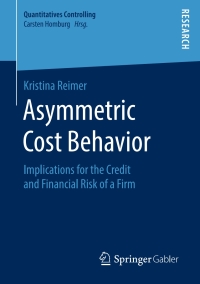- For each question, please answer and show your calculations.It may work best to use Excel to compute your numbers and show your audit trail.
Manny and Malcolm, two Bentley Alumni, decided to make a good footwear product for their fellow Falcons who walk the Bentley hills every day to class. The named their company, Falcon Footwear ("Falcon"). Renting some manufacturing space near campus, they decided to set up shop and began production in 2015. Falcon Footwear have gained traction (no pun intended), selling first to students, faculty and staff at the Bentley campus, as well as alumni and their families. They have since expanded to similar customers at different colleges and universities, tailoring to the individual school's logos. At the end of 2019, after 4 years of operation, Manny and Malcolm are at the crossroads of how expanding their business next. Currently, the three brands of footwear that Falcon sells are the Flex Flyer, the Artic and the Bentley. This was their original pitch for each of the models when Falcon started business. Of course with expansion to other colleges and universities, they kept the names, but expanded the marketing pitch to align with many other activities with their customers. Flex Flyer - An all-purpose sneaker that is used to travel around campus, built with durable quality so that its price point, while a little high for the average student, will provide a long-lasting product to justify the cost. Artic - A boot that withstands the winter weather seen on the Bentley hills or can be used for other winter activities Bentley - The top-of-the-line sneaker that is made for high performance athletics. Below is the most recent selling price and cost information for Falcon as of the beginning of 2019. Falcon Footwear EXHIBIT 1 - Per Unit Selling Price and Costs Flex Flyer Bentley Artic Selling price/unit $ 80.00 $ 150.00 $ 125.00 Costs/unit Flex Flyer Bentley Artic Cloth insert 1.00 $ 5.00 $ 5.00 Direct Labor 20.00 $ 60.00 50.00 Factory Equipment Depreciation 0.02 $ 0.04 $ 0.04 Factory Insurance 0.03 $ 0.03 $ 0.03 Factory Rent 1.00 $ 1.00 1.00 Factory Utilities $ 0.01 $ 0.02 0.03 Glue for shoe $ 0.01 0.02 0.03 Logos $ 0.01 $ 0.03 0.01 Rubber sole 5.00 $ 15.00 20.00 Shoe laces 0.02 $ 0.03 $ 0.03 Shoe leather 10.00 $ 20.00 30.00 Shoe stiching 0.05 0.15 0.25 Other costs - total per MONTH: Flex Flyer Bentley Artic Advertising/Promotion 2,000 $ 5,000 $ 3,500 Corporate office rent/utilities 10,000 $ 10,000 $ 10,000 Selling General & Administrative Payroll 30,000 $ 30,000 $ 30,000In addition, you have been given the following information for year 2019: I You do not have to factor in income taxes for Falcon. I Units Win 2019 by product are as follows: Flex Fly_er Bentley: Artie Totd Units sold 2019 40,000 25,000 15,000 00,000 Questions (Show all computations in Excel}: 1. For each product line in 2019: a. Calculate the contribution margin per unit. b. Calculate the contribution margin percentage. 2. Build a 2019 contribution income statement to operating income level for each of Falcon's products as well as the total company. 3. For each product line in 2019: a. Calculate the break-even (in units}. b. Calculate the break-even (in dollars}. 4. For each product line in 2019: a. Calculate the margin of safety [in dollars]. b. Calculate the margin of safety [in units} for 2019? 5. What is the degree of operating leverage for each of the products for 2019'? 6. Manny and Malcolm are doing financial planning for 2020: a. Based on the results they have calculated for 2019, how many units must Falcon sell of each product ifthey want to achieve a target operating income as shown in the chart below. Calculate this for each product individually. Flex Fly_er Bentley Artic Target Profit 5 1,500,000 S 800,000 5 400,000 b. Do you think they can achieve this target profit goal on any or aJLQt the product lines? Why or why not? 7. Based on your analysis in #1-#6, should Falcon eliminate any of its product lines in 2020? a. Answer from quantitative perspective using the calculations above. b. Answer from a qualitative perspective, what would be three things (internal or external to the company, positive or negative impacts) that could possibly be a reaction if any of the product lines were dropped. c. What could be done to resurrect any product line that you think should be eliminated? And if nothing can be done, why? 8. Sarah, an engineer from MIT, approached Manny and Malcolm and had some ideas on how to further automate the manufacturing process. Per Sarah, if Falcon automated their facilities with her suggestions, Falcon would decrease the total variable costs by 20% for each product, but would increase the total fixed costs of each product by 12%. a. If Falcon decides to do this, what is the new break-even in units for each product? Use the 2019 historical numbers you generated for in Parts #1-5 and compare to those results (i.e., don't include the target profit into the equation). b. Do you recommend that Falcon pursue this automation option with Sarah for any of the product lines? Where does it work and where does it seem less optimal









